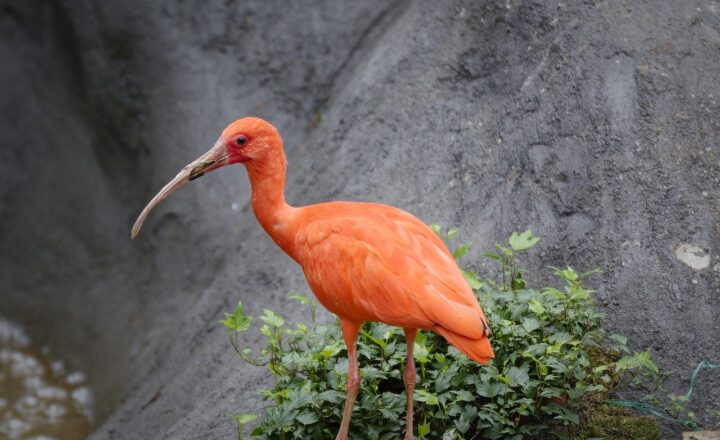The First Vertebrates: How Early Fish Changed Life in Earth’s Waters
November 14, 2024

The history of life on Earth is a tale of adaptation and evolution, filled with remarkable transformations that shaped the planet’s biodiversity. Among these milestones, the emergence of vertebrates stands out, particularly the first fish. These early vertebrates not only revolutionized aquatic ecosystems but also laid the foundation for all land-dwelling animals. In this article, we delve into the fascinating journey of these pioneering creatures, exploring their anatomy, evolutionary significance, and the profound impact they had on life in the waters of our planet.
The Origins of Vertebrates: A Look Back in Time
The story of vertebrates begins around 500 million years ago during the Cambrian period, a time when life was predominantly marine. Early organisms were mostly invertebrates, lacking the complex backbone that characterizes vertebrates. However, fossil evidence suggests that the first vertebrates emerged during the Ordovician period, evolving from simpler chordate ancestors.
Fossils from this era reveal the existence of jawless fish, such as the Agnatha, which were among the earliest vertebrates to inhabit the oceans. Unlike modern fish, these creatures lacked jaws and were primarily filter feeders, using their elongated bodies to sift through sediment.
Anatomy and Adaptations of Early Fish
Early fish exhibited a range of adaptations that allowed them to thrive in various aquatic environments. Their anatomical features included:
- Notochord: The notochord, a flexible rod-like structure, provided support and flexibility, enabling early fish to swim effectively through the water.
- Primitive Nervous System: The development of a centralized nervous system allowed these organisms to respond to environmental stimuli and enhance their survival chances.
- Gills: Early fish utilized gills to extract oxygen from water, a crucial adaptation for life in aquatic habitats.
- Scales: The evolution of scales offered protection and reduced water resistance, aiding in mobility and defense against predators.
These adaptations not only improved their survival abilities but also paved the way for the diversification of vertebrates.
The Evolutionary Leap: From Fish to Land Animals
As fish evolved and diversified, some adapted to different ecological niches, leading to the emergence of unique species. The development of jaws, which appeared around 400 million years ago, marked a significant evolutionary leap, allowing fish to become active predators and exploit new food sources. This transition enabled the exploitation of various habitats, with some fish evolving to occupy freshwater environments.
Around 375 million years ago, a crucial transformation began to take shape. Some fish developed limbs instead of fins, an adaptation that allowed them to venture onto land, marking the first steps toward the colonization of terrestrial ecosystems. This evolutionary transition is exemplified by the famous transitional species, Tiktaalik roseae, a fish-like vertebrate that possessed both gills for underwater breathing and primitive lungs for air.
The Impact of Early Fish on Aquatic Ecosystems
The presence of early fish significantly altered aquatic ecosystems, influencing their structure and dynamics. These vertebrates played essential roles in food webs, serving as both predators and prey. Their ecological interactions promoted biodiversity and stability within marine habitats.
The evolution of different fish species led to:
- Biodiversity Expansion: The diversification of fish species contributed to the richness of marine biodiversity, with various adaptations allowing them to occupy distinct ecological niches.
- Nutrient Cycling: As fish adapted to diverse diets, their feeding behaviors played a critical role in nutrient cycling, enhancing the productivity of aquatic ecosystems.
- Ecosystem Engineers: By altering their habitats (e.g., through foraging or creating shelters), fish influenced the physical environment, impacting other organisms’ survival and reproduction rates.
In essence, early fish set the stage for the complex interactions, adaptations, and evolutionary pathways that shaped modern aquatic ecosystems.
The Legacy of Early Fish in Modern Biology
The evolutionary journey of the first vertebrates continues to influence modern biology. Understanding the emergence of early fish has provided insights into:
- Evolutionary Development: Studies of the genetic and developmental processes in modern fish offer clues about the traits that were necessary for the transition from water to land.
- Conservation Efforts: Recognizing the importance of preserving aquatic ecosystems and the species that inhabit them is essential in light of the historical significance of early vertebrates.
- Understanding Biodiversity: The adaptations and coexistence of various fish species inform conservationists and ecologists about maintaining healthy ecosystems amidst ongoing environmental changes.
ᅠ
The legacy of these early fish has transcended time, reminding us of how far life has come and the delicate balance that exists within our ecosystems.
Conclusion: Reflecting on Our Aquatic Ancestors
The emergence of fish marked a significant chapter in the history of life on Earth, paving the way for the evolution of all vertebrates. Their adaptations not only transformed aquatic ecosystems but also laid the groundwork for life beyond the waters.
By exploring the origins and impact of early fish, we gain valuable insights into the interconnectedness of life and the importance of preserving our planet’s biodiversity. As we continue to navigate the challenges of environmental change, it is crucial to remember the lessons from the past and honor the legacy left by these remarkable creatures.
In appreciating the ancestors that swam in ancient seas, we understand the foundation they provided for all life forms that followed, setting a course for diversity and resilience that continues to shape the world we inhabit today.








